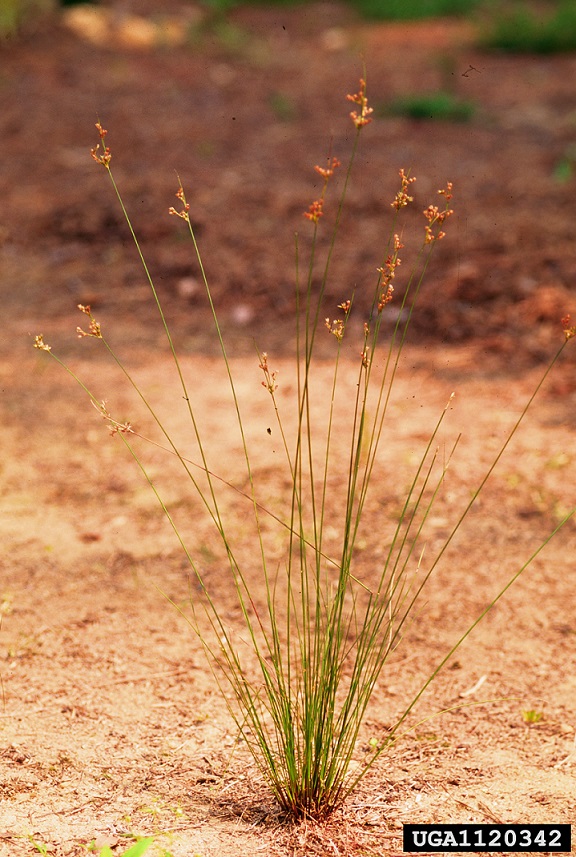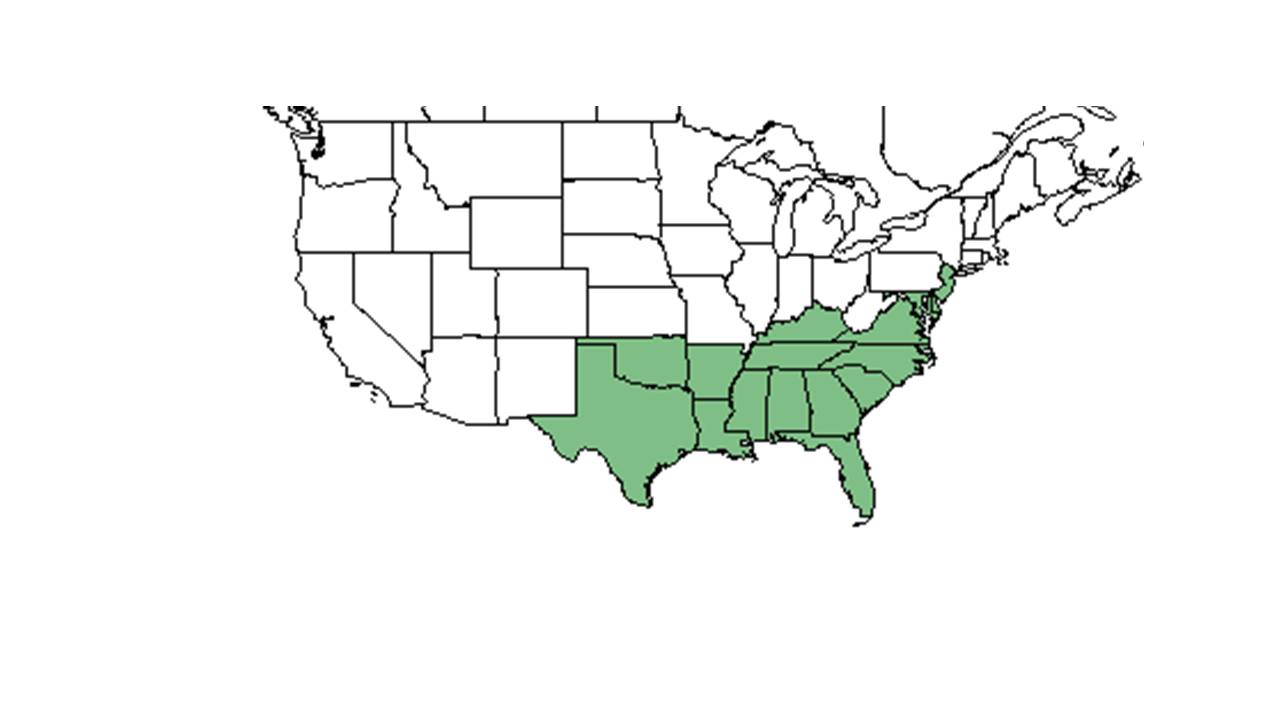Difference between revisions of "Juncus coriaceus"
HaleighJoM (talk | contribs) (→Ecology) |
|||
| Line 18: | Line 18: | ||
}} | }} | ||
| − | Common name: | + | Common name: leathery rush<ref name=weakley>Weakley, A.S. 2020. Flora of the Southeastern United States. Edition of 20 October 2020. University of North Carolina at Chapel Hill, Chapel Hill, North Carolina.</ref> |
==Taxonomic notes== | ==Taxonomic notes== | ||
Synonyms: ''Juncus setaceus'' Rostkovius<ref name="weakley">Weakley, A.S. 2015. Flora of the southern and mid-atlantic states. Working Draft of 21 May 2015. University of North Carolina at Chapel Hill, Chapel Hill, North Carolina.</ref> | Synonyms: ''Juncus setaceus'' Rostkovius<ref name="weakley">Weakley, A.S. 2015. Flora of the southern and mid-atlantic states. Working Draft of 21 May 2015. University of North Carolina at Chapel Hill, Chapel Hill, North Carolina.</ref> | ||
Revision as of 14:23, 2 June 2023
| Juncus coriaceus | |
|---|---|

| |
| Photo by James H. Miller & Ted Bodner, Southern Weed Science Society, Bugwood.org | |
| Scientific classification | |
| Kingdom: | Plantae |
| Division: | Magnoliophyta - Flowering plants |
| Class: | Liliopsida – Monocotyledons |
| Order: | Juncales |
| Family: | Juncaceae |
| Genus: | Juncus |
| Species: | J. coriaceus |
| Binomial name | |
| Juncus coriaceus Mack. | |

| |
| Natural range of Juncus coriaceus from USDA NRCS Plants Database. | |
Common name: leathery rush[1]
Contents
Taxonomic notes
Synonyms: Juncus setaceus Rostkovius[1]
Varieties: none.[1]
Description
A description of Juncus coriaceus is provided in The Flora of North America.
Distribution
This plant's range extends north to southern New Jersey, south to peninsular Florida, west to Texas, and north to Kentucky, Arizona, and Oklahoma.[1]
Ecology
Habitat
This species has been observed to grow in shaded, moist pine flatwoods and hardwood woodlands on water edges in peaty and sandy loam soils.[2] It also has been seen growing in moist disturbed areas such as spoils from digging and in ditches.[2] Associated species include Illicium, Ilex, Magnolia, Quercus, Carya, and Juncus effusus.[2]
Phenology
J. coriaceus blooms June through September.[3][2]
Conservation, cultivation, and restoration
Cultural use
Photo Gallery
References and notes
- ↑ 1.0 1.1 1.2 1.3 Weakley, A.S. 2020. Flora of the Southeastern United States. Edition of 20 October 2020. University of North Carolina at Chapel Hill, Chapel Hill, North Carolina. Cite error: Invalid
<ref>tag; name "weakley" defined multiple times with different content Cite error: Invalid<ref>tag; name "weakley" defined multiple times with different content Cite error: Invalid<ref>tag; name "weakley" defined multiple times with different content - ↑ 2.0 2.1 2.2 2.3 Florida State University Robert K. Godfrey Herbarium database. URL: http://herbarium.bio.fsu.edu. Last accessed: June 2014. Collectors: Loran C. Anderson, R. F. Doren, Robert K. Godfrey, Travis MacClendon, Karen MacClendon, Annie Schmidt, and Cecil R. Slaughter. States and Counties: Florida: Calhoun, Jackson, Jefferson, Liberty, Marion, St. Johns, and Wakulla. Georgia: Grady.
- ↑ Nelson, G. PanFlora: Plant data for the eastern United States with emphasis on the Southeastern Coastal Plains, Florida, and the Florida Panhandle. www.gilnelson.com/PanFlora/ Accessed: 12 DEC 2016